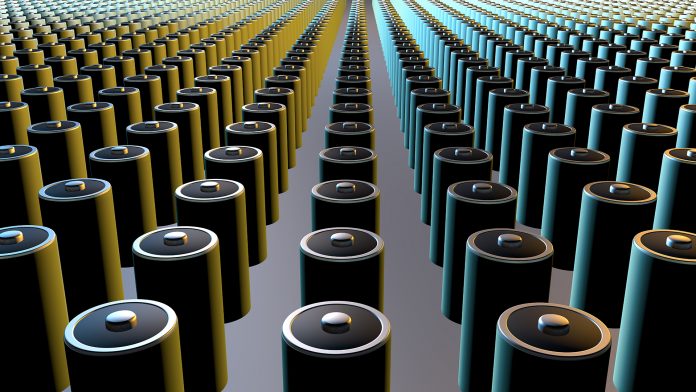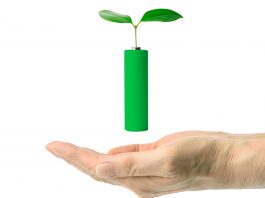Researchers at the Bristol Composites Institute (BCI) have developed a controllable unidirectional ice-templating strategy that can tailor post-lithium-ion batteries’ electrochemical performances sustainably and with large-scale availability.
Post-lithium-ion batteries
The demand for energy storage that is sustainable, ethical and low in cost is growing exponentially. This is partly due to the drive towards developing battery-powered transport systems – mostly replacing petrol and diesel-based engines with electric vehicles – and as a result of hand-held devices such as mobile phones. Currently, these technologies primarily rely on lithium-ion batteries.
Batteries consist of two electrodes and a separator with an electrolyte between them, which carries the charge. Several problems are associated with using lithium-ion batteries, such as a build-up of the metal inside the devices, which can lead to short circuits and overheating. Additionally, lithium mining in Chile, Bolivia and Argentina is very destructive, and there are poor human rights records associated with it.
Alternatives to lithium-ion batteries include those constructed from sodium and potassium; however, these have not historically performed as well in terms of their rate performance and the ability to be reused. This inferior performance is due to the larger sodium and potassium ions sizes and their ability to move through the porous carbon electrodes in the batteries.
Another issue associated with these batteries is they cannot be easily disposed of at their end-of-life due to their use of materials that are not sustainable. The cost of the materials is another contributing factor, and the need to provide cheaper stored energy sources.
Developed technology
To combat the issues mentioned, a team at the Bristol University’s Composites Institute has developed some new carbon electrode materials based on an ice-templating system, in collaboration with Imperial College. These materials are called aerogels, where cellulose nanocrystals (a nano-sized form of cellulose) are formed into a porous structure using ice crystals that are grown and then sublimated. This leaves large channels within the structure that can carry the large sodium and potassium ions.
Jing Wang, the lead author and PhD student at BCI, said:
“We proposed a novel controllable ice-templating strategy to fabricate low-cost cellulose nanocrystals/polyethene oxide-derived carbon aerogels with hierarchically tailored and vertically-aligned channels as electrode materials, which can be utilised to well-tuning the rate capability and cycling stability of sodium- and potassium-ion batteries.
“Benefiting from the renewability of the precursor and scalability at relatively low cost in the environmentally benign synthesis process, this work could offer an appealing route to promote large-scale applications of sustainable electric vehicles and large-scale energy storage grids in the near future.”
The performance of these new sodium and potassium ion batteries has been shown to outperform many other comparable systems, such as those used to produce lithium-ion batteries, and it uses a sustainably sourced material – cellulose.
“We were astounded with the performance of these new batteries. There is great potential to develop these further and to produce larger scaled devices with the technology.
“In light of these findings, we now hope to collaborate with industries to develop this strategy on an industrial scale and to explore whether this unique technology can be easily extended to a variety of other energy storage systems such as zinc-, calcium-, aluminium- and magnesium-ion batteries, thus demonstrating its universal potential in next-generation energy storage systems,” concluded Steve Eichhorn, Professor of Materials Science and Engineering at the University of Bristol and corresponding author.
The full research paper ‘Ice-Templated, Sustainable Carbon Aerogels with Hierarchically Tailored Channels for Sodium- and Potassium-Ion Batteries‘ can be found at Wiley Online Library.









